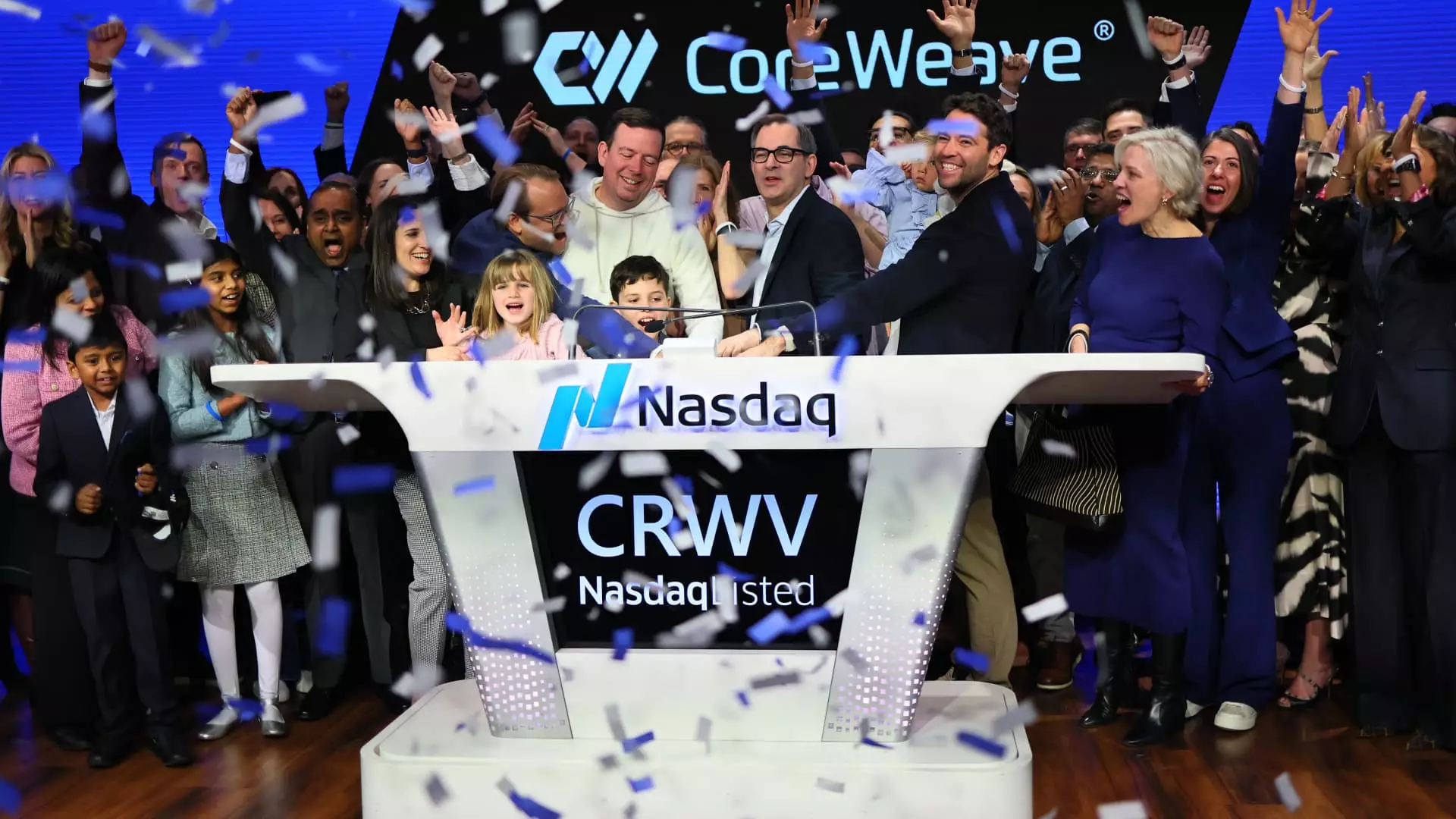The recent public debut of CoreWeave, an artificial intelligence cloud company, paints a grim picture of current market conditions for tech IPOs. Following a promising opening, when shares were set at $40, CoreWeave’s stock plummeted, dropping over 10% on its second day of trading. This suggests not only a lack of faith from investors but also that the anticipated buzz surrounding the IPO was more noise than substance. How did a venture-backed unicorn that leverages Nvidia’s GPUs for cloud services manage to fall flat on its face?
The Hurdles Before the Launch
CoreWeave’s attempts to make a splash in the public market reflected a broader trend—an unmistakable anxiety among tech investors. The company had to significantly lower its offering price to attract buyers, a clear indication of a fraying market confidence. Moving from an expected pricing range of $47 to $55, down to a price of $40, CoreWeave’s management likely sensed the chilled investor appetite and took drastic measures to salvage the situation. This contraction not only reflects poorly on CoreWeave’s marketability but also raises questions regarding the company’s internal valuation strategies.
Investor Sentiment Trouble
Despite being viewed as a potential catalyst for a renaissance in tech IPOs, CoreWeave’s lackluster opening has only intensified skepticism among traders. The relevance of CoreWeave’s value proposition comes into question when considering that it operates in a landscape heavily dominated by titans such as Microsoft and Amazon. Investors are left wondering whether the promises of astounding revenue growth—evidenced by a 737% increase to $1.92 billion—are merely smoke and mirrors given the staggering net loss of $863 million the company reported in its prospectus.
Macroeconomic Headwinds and Political Climate
Further complicating the situation, the broader market landscape is fraught with macroeconomic uncertainties, exacerbated by previous administration policies, making the climate inhospitable for new entrants. President Trump’s trade agenda, including various tariffs, has propelled inflation and raised interest rates, contributing to an adverse environment for technology investments. The burden of such external factors cannot be understated in CoreWeave’s failure to enchant investors.
A Deteriorating Confidence in Emerging Tech
With other potential IPOs looming on the horizon—like ticket reseller StubHub and financial company Klarna—CoreWeave’s downward spiral not only disheartens its investors but paints a concerning picture of burgeoning tech companies trying to enter public markets. The floundering support for CoreWeave could very well deter others from following suit, perpetuating a stagnation in a sector that desperately seeks revitalization.
In today’s volatile landscape, where performance meets political finance, CoreWeave’s struggles might serve as a wake-up call for the tech sector. It begs the question: Are we prepared to navigate the challenges that lie ahead, or are we set to witness more embarrassments similar to CoreWeave’s?

